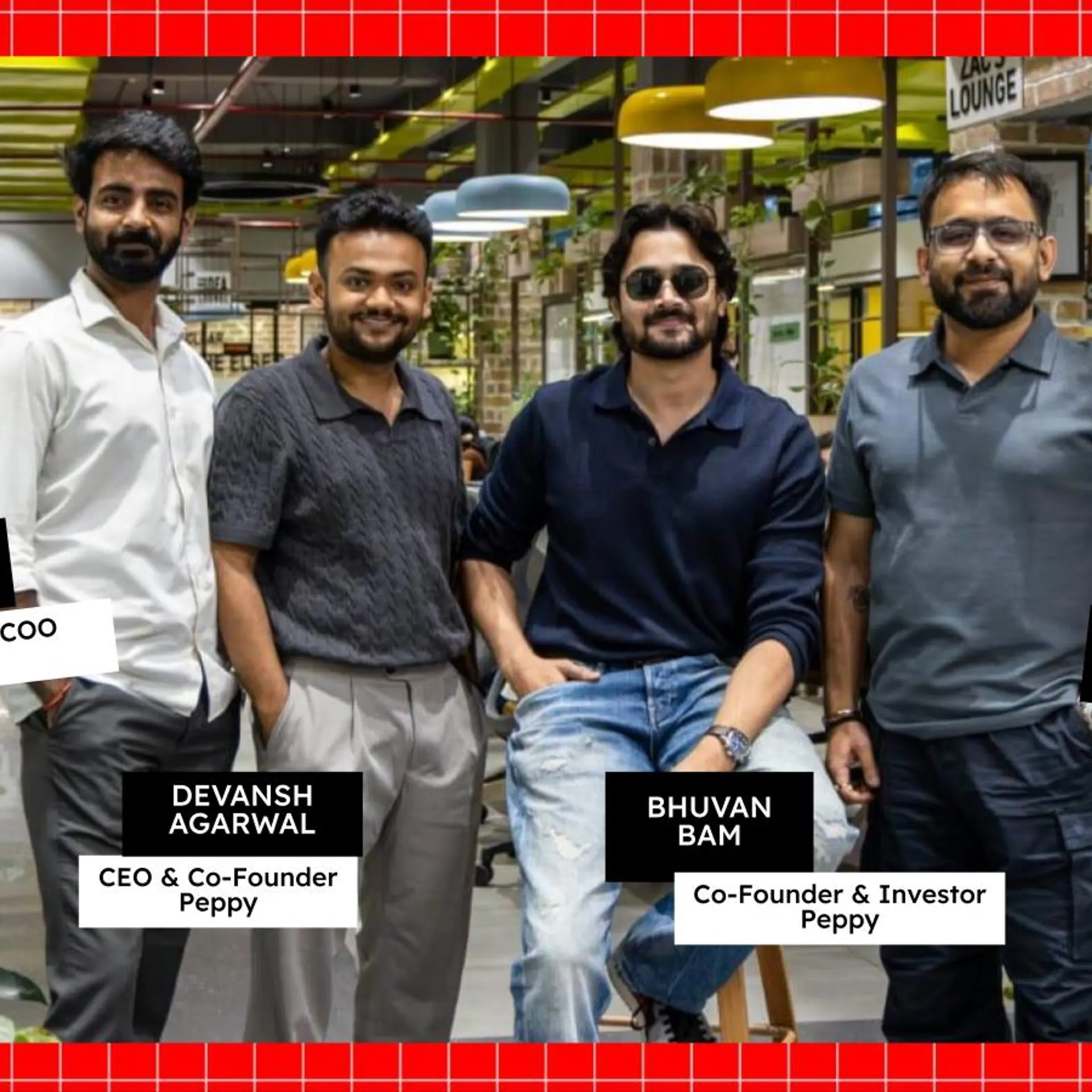Tech charts the course, but logistics isn’t on road to profitability yet
Hankering after customer acquisitions, logistics firms are burning cash by cutting prices and incentivising truckers and agents. The fragmented nature of the business means no firm will make money for the next 10 years.
It is 6.00 am, and over 100 trucks owned by LCM Logistics have queued up at a warehouse owned by Reliance at Peenya Industrial Estate in Bengaluru. T B Subramanya, the founder of LCM, a seven-year-old company, has to manage another 400 truckers associated with his logistics firm and is coordinating with his team to apportion at least 10 deliveries per truck across Bangalore.
He switches to Kannada to explain why logistics can be such a nightmare.
“I have to manage my cash cycle by ensuring payments to truckers across 45 days and then make sure I get paid by the corporate. It is a never-ending cycle,” he says. He adds that despite the advent of technology, things come back to brass tacks - collecting cash from the corporate, managing payment cycles of truckers, and paying salaries and rentals on warehouse assets.
“Get this cycle wrong and this business is not for you. While technology sets all the alerts and charts a course, one cannot control the fragmented nature of this business,” Subramanya says.
Technology has enabled Subramanya to track payment cycles; he’s able to get brands to pay up and by doing so, is able to pay these truckers.
“But who is to say that these brands will honour payments on time? This is a chronic problem in the industry where working capital management is a key issue to survival,” he says.

The absence of margins
Subramanya, like others in the business, agrees that tech only allows data capture and tells a business about payment cycles. But unfortunately, margins are a function of operational efficiency in the system and are absent.
LCM Logistics, a Rs 45-crore company, makes a 7 percent gross margin on its business.
According to EY, close to a billion dollars has gone into technology-led logistics companies, but unfortunately, all of them are still hankering after customer acquisitions. Like the e-commerce industry, these companies are burning money on the brand side by reducing prices and are incentivising truckers and agents on the service-supply side.
Mohandas Pai, Managing Director of Aarin Capital, says, “A lot of companies are living off investor money and will take a long time to break even on the B2B side because they are still acquiring customers.”
The sad part is that once investor money dries up, the industry will have to go back to competing with traditional businesses.
Naganand Doraswamy, founder of IdeaSpring Capital, says: “The hope by then is to figure out if logistics companies can appreciate technology that can track asset utilisation and provide a way to manage working capital. But the industry is fragmented and startups will face a challenge because collecting money will remain a challenge.”
The fragmented nature of the industry
According to the All India Motor Transport Congress, there are close to 12 million trucks in India and about 90 percent of them belong to single-truck owners — small entrepreneurs — in small towns. This is what makes it difficult to integrate technology into their lives.
In Namakkal, Tamil Nadu, a technology company called LOBB is working with agents to use their technology to manage loads across cities.
The founders, Venu Kondur and Jayaram Raju, have 8,000 truckers on their platform and have signed up 200 brands on their real-time logistics platform. The platform allows agents to understand movements of trucks from one city to another and book return loads. It also allows agents to manage part-truck and full-truck loads. The platform intends to increase asset (truck) utilisation for agents and drivers and is reducing prices for brands, thanks to the availability of trucks to ship the product to other regions.
“The fragmented nature of the industry is largely because of the lack of pricing information, per kilometre basis and the tonnage of the vehicle, between all parties. Agents themselves don’t know that they can bring prices down and ensure timely deliveries by increasing truck utilisation,” Jayaram says.
The money-go-around
The opportunity of changing India has led investors to put in enormous amounts of money to create awareness in the industry. Companies like EComm Express, Delhivery, BlackBuck and Rivigo were some of the companies that cropped up over the last seven years to capture this opportunity of ensuring great service and making pricing transparent.
The portent that led to a reality was the passage of the Goods and Services Tax, which created a single-point taxation system. Under the new system, the movement of goods across state borders would be faster and investors realised this would change the nature of fragmentation in the industry.
Investors took a bet that large corporate logistics players like Fedex and DHL would begin to invest in the entire supply chain infrastructure (from cold chain to warehousing to surface transport to shipping) and therefore also work with new-age technology companies organising the industry. However, no one realised that India’s industry, agriculture and manufacturing is catered to by local logistics players who also work with larger brands. The scale is just too big, for the moment, for modern technology (truck, delivery and warehouse utilisation technology) to penetrate across 3,500 mandis that serve 600,000 villages and 48 million SMEs spread across 70 clusters across the country.
An eye on the trucking ecosystem
Investors believe that these modern-day logistics companies will offer quick returns because they can acquire a lot of customers. Profitability is not important for the moment as growth in people using technology is what matters to investors.
“No wonder the industry is burning money,” Pai says.
Right now, the scheme of things involves acquiring as many customers (agents, truckers, and brands) on the platform. The older players do not incentivise anyone they work with on realistic pricing.
For example, a 14-ton-multi-axle full truckload with a 32-feet container from Bangalore to Kolkata costs between Rs 80,000 and Rs 85,000 if a brand worked with a traditional player. A new-age company works on pricing that is 10 percent lower, offers immediate availability of the truck and tracks delivery. Unfortunately, the investor-funded industry is incentivising the trucker and reducing prices for the brand that needs the product to be shipped. This is where the burn is happening. Profitability seems far-fetched because of the high cost of operations, including high salaries, incentives, payments made to truckers without recovering money from the brands and delays in payment by brands.
But there’s a reason...
However, these new-age companies are onto something big. They are burning cash because they are collecting data to understand the industry and are creating a platform that can simplify the logistics industry. Today, they are ensuring that there is full asset utilisation — full truckloads from point A to B, and also when the truck returns from B to A.
The logistics industry also has a part truckload system, where several brands are aggregated onto a truck, and products are delivered on a particular route. So if a trucker is driving from Bangalore to Kolkata, there may be drop-off points in Hyderabad and pickup points there too.
While this works, it will take a long time to become profitable. Investors have to stay invested for a decade or more because 90 percent of the industry is fragmented. Not to forget that Indian businesses tend to work with those offering the lowest pricing and extended credit terms.
Sources also say truckers work with companies that are incentivising them. In the end, managing cash and acquiring customers will determine valuations.
Naganand, of IdeaSpring Capital, says, “The industry by itself will not change overnight.”
Therefore until payment cycles get sorted, at brand level, and incentivising of truckers does not stop there is every chance that modern data logistics companies will not make money in the short run. They need to make sure rentals on their assets, such as warehouses, are low and salary costs do not burn investor equity. But the cash burn will help acquire customers and create processes that will become the blueprint for the future of the industry.
No wonder companies like Rivigo and BlackBuck have raised large sums of capital. Rivigo has raised $115 million and expect to raise more this year while Blackbuck has already raised $100 million. Both companies are eyeing the trucking ecosystem.
Then there are companies like Delhivery, which is managing intra-city delivery and handling warehousing as a service. It has raised $257 million and has also invested in companies like Qikpod, Parcelled, Rocketbox and Opinio as they complete last-mile delivery and storage services.
Rivigo and Blackbuck, apart from their valuations, are increasing their revenues rapidly with these investments. As of the last financial year, they were clocking a run rate of more than Rs 200 crore and Rs 100 crore, respectively. These companies must very play a long-term game to increase revenues and create value or find a suitable large logistics corporate to buy them over.
There have not been large exits or acquisitions in the Indian logistics industry.
Ankit Sethia, Founder of HipShip, a Bangalore-based express delivery service platform, says: “Tech can succeed if it enables Indian businesses to discover the right pricing. Tech companies should not acquire physical assets like warehouses and trucks, which is why logistics corporates stay away from the cash burn business and there have not been large acquisitions yet.” The big players who follow an asset light model are Porter in the intra-city play and there is BlackBuck in the full truck-load space.

The deal sizes
Of the 200-odd logistics startups in the country, only 20 companies have been able to raise large rounds of money. According to YourStory research, logistics only had 28 deals in 2016 and deal sizes were smaller than in 2015. In 2015, ECom Express raised $133 million while Delhivery was able to raise close to $85 million.
Jones Lang Lasalle pegs the current market size of the industry at $150 billion, expecting it to grow to over 220 billion by 2030.
Anish Basu Roy, Co-founder of Shotang, a technology-led distribution company, says “One has to work directly with brands to price products cheaper for the retail ecosystem and reduce logistics costs by estimating demand. This is done with technology.”
Helping shape the supply chain strategy
According to research and consulting firm McKinsey, current wastage because of logistics is 4.3 percent of the GDP; it is expected to go towards 5 percent by 2020. The wastage is because of delays in movement across the country due to scarcity in the number of trucks in the country, tardy payments, no consistency in pricing and lack of good service level agreements.
Prakash Tulsiani, COO of All Cargo Logistics, a Rs 5,568-crore logistics company, says: “GST will rapidly change the way businesses work on their supply chain and how Indian companies export products. There will be a consolidation of warehouses and manufacturing plants. The business opportunity lies in helping these companies shape their supply chain strategy.”
The question to ask is whether the likes of DHL or Fedex will acquire Indian logistics startups or fund them. But before these global companies invest in them, there is a need to reduce the cash burn as none of the funded logistics companies are profitable. Investors have stepped in for the sheer size of the market, but one can only speculate whether they are playing to consolidate the industry or create value through innovation.







